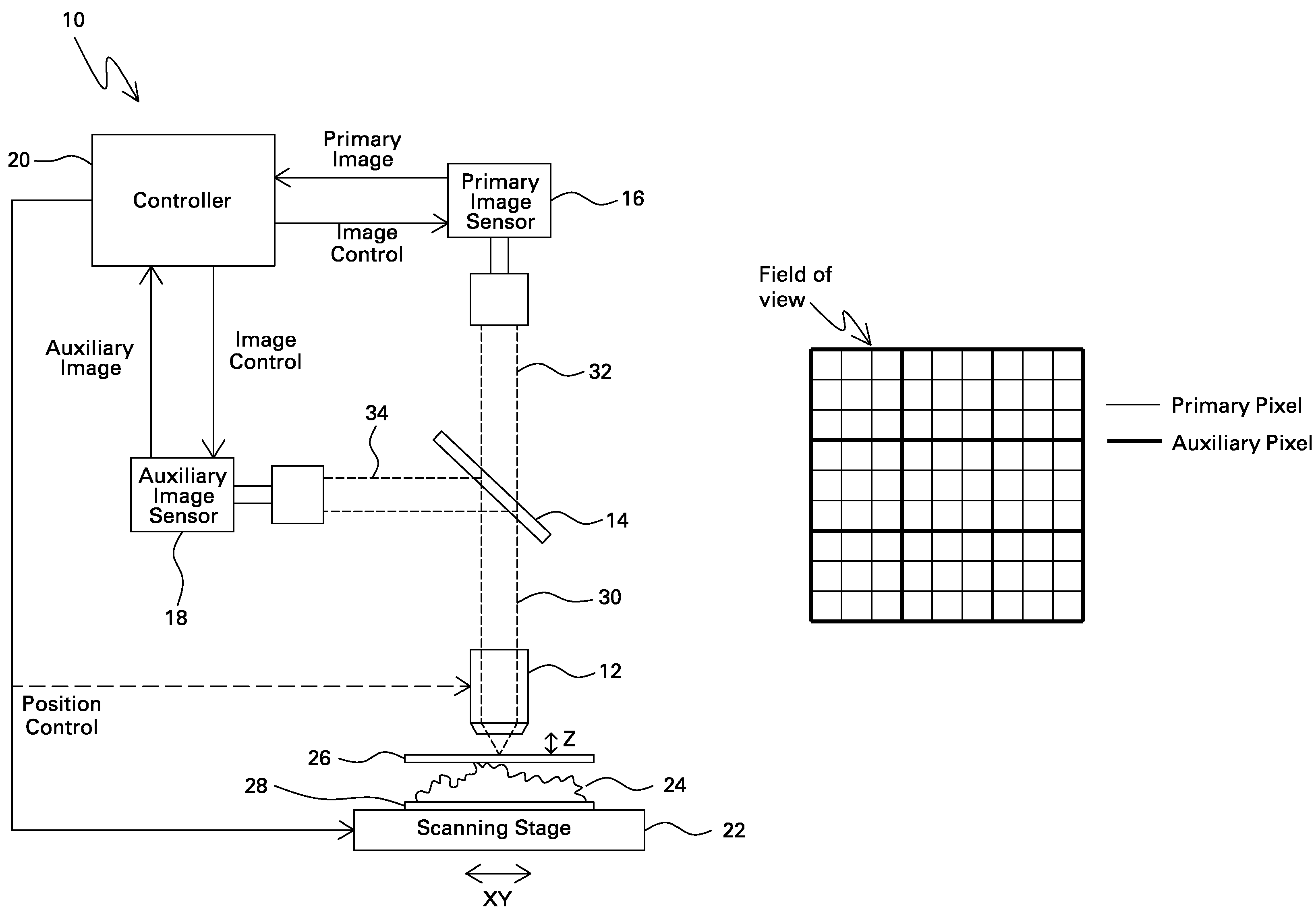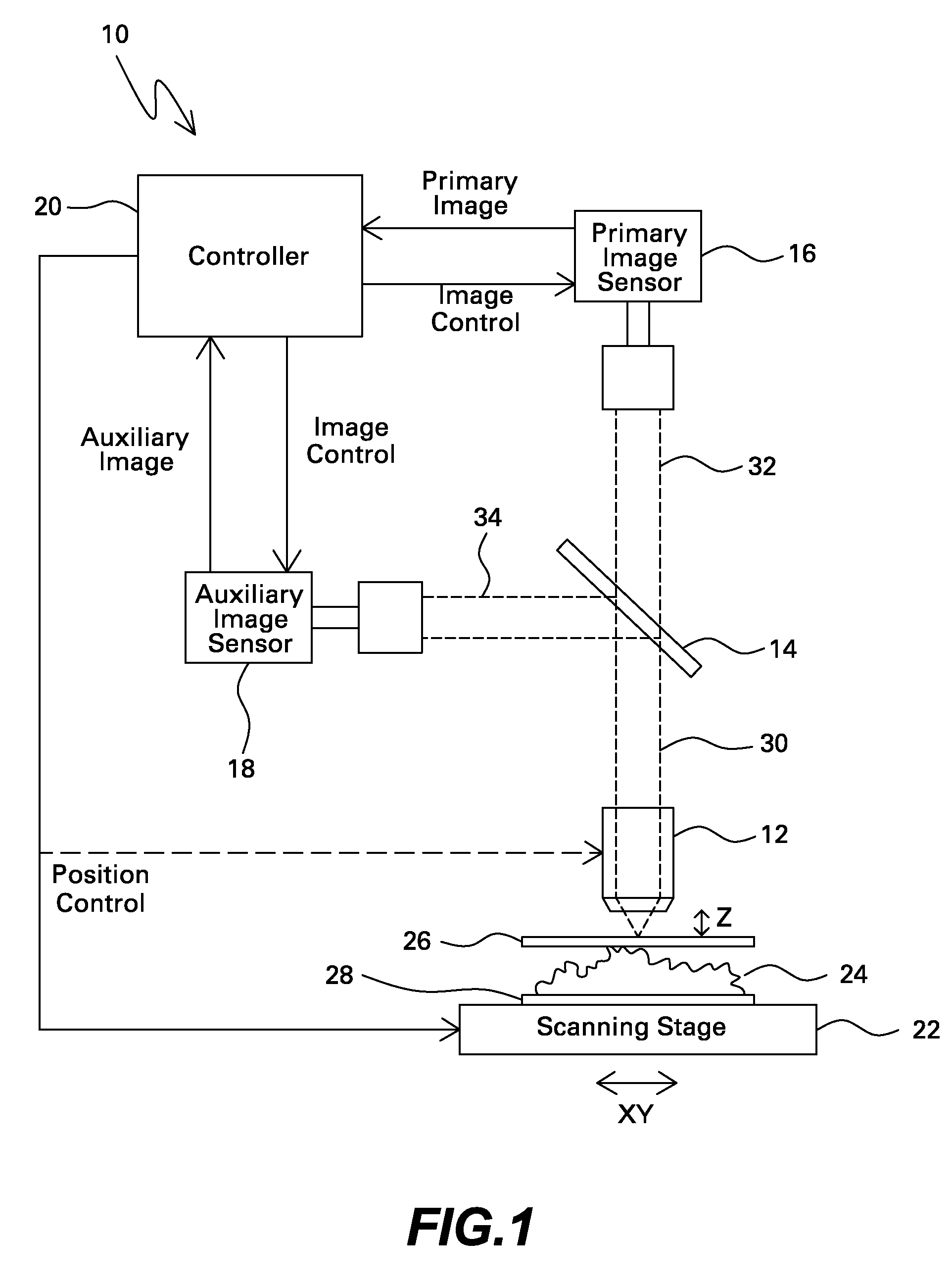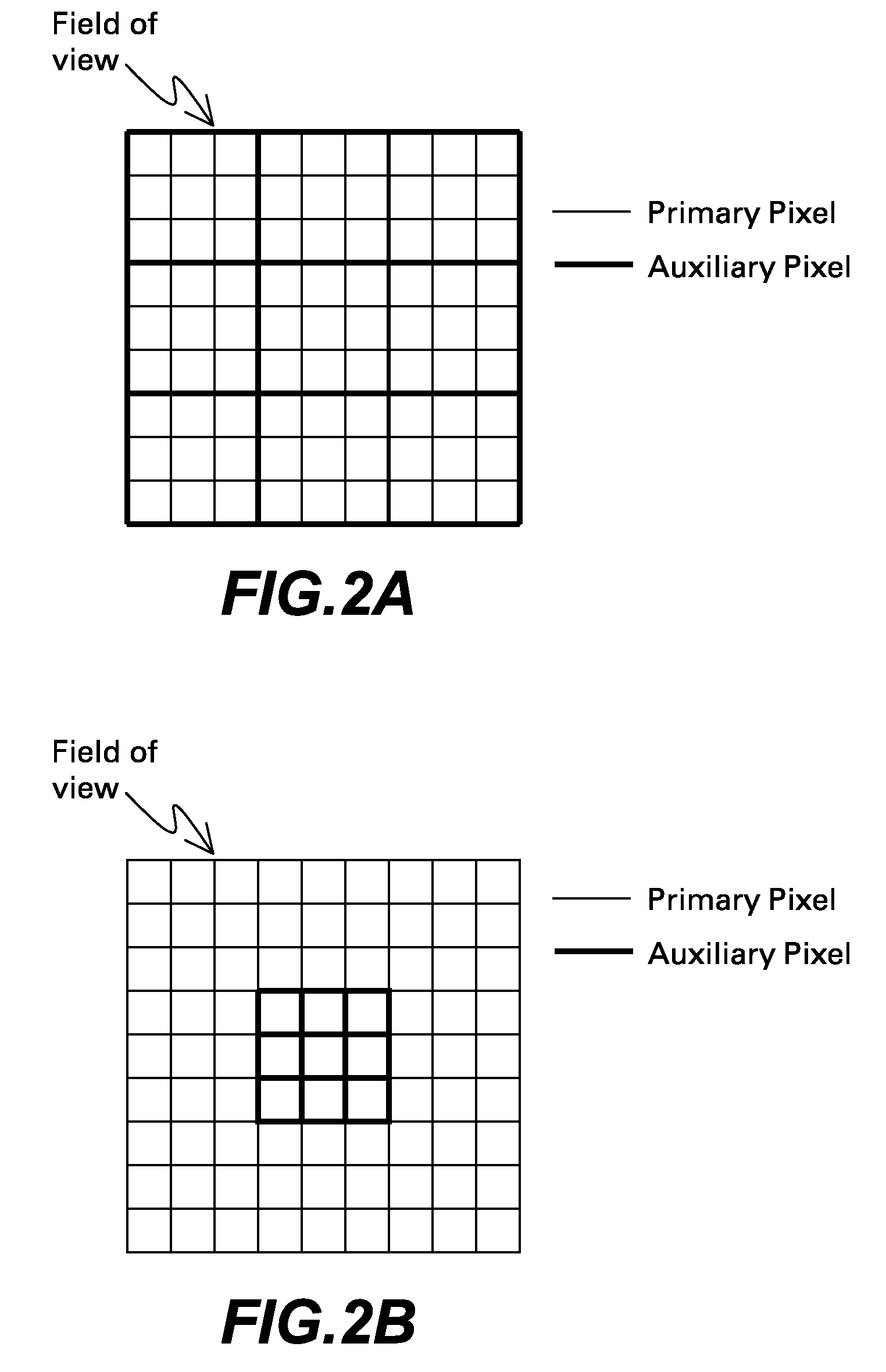Microscope with dual image sensors for rapid autofocusing
a microscope and image sensor technology, applied in the field of microscopes, can solve the problems of time delay that prevents rapid autofocusing, microscope may exhibit mechanical instability, and single reference point may lack sufficient information for accurate autofocusing
- Summary
- Abstract
- Description
- Claims
- Application Information
AI Technical Summary
Benefits of technology
Problems solved by technology
Method used
Image
Examples
Embodiment Construction
[0017]FIG. 1 illustrates one embodiment of a digital optical microscope 10 that includes objective lens 12, beam splitter 14, primary image sensor 16, auxiliary image sensor 18, controller 20 and scanning stage 22.
[0018]Sample 24 is disposed between coverslip 26 and slide 28, and sample 24, coverslip 26 and slide 28 are supported by scanning stage 22. Coverslip 26 and slide 28 may be transparent glass, while sample 24 may represent a wide variety of objects or samples including biological samples. For example, sample 24 may represent biopsy tissue such as liver or kidney cells. In a non-limiting example, such biopsy tissue samples may have a thickness that averages 5 microns and varies by several microns and may have a lateral surface area of approximately 15×15 millimeters, and.
[0019]Objective lens 12 is spaced from sample 24 by a focal distance that extends along an optical axis in the Z (vertical) direction, and objective lens 12 has a focal plane in the XY (lateral) directions. ...
PUM
 Login to View More
Login to View More Abstract
Description
Claims
Application Information
 Login to View More
Login to View More - R&D
- Intellectual Property
- Life Sciences
- Materials
- Tech Scout
- Unparalleled Data Quality
- Higher Quality Content
- 60% Fewer Hallucinations
Browse by: Latest US Patents, China's latest patents, Technical Efficacy Thesaurus, Application Domain, Technology Topic, Popular Technical Reports.
© 2025 PatSnap. All rights reserved.Legal|Privacy policy|Modern Slavery Act Transparency Statement|Sitemap|About US| Contact US: help@patsnap.com



